When Should You Put Out Hummingbird Feeders in Spring?
Updated: Feb. 22, 2023
One of the most exciting signs of spring is when hummingbirds come back. Learn when you should put out hummingbird feeders in spring to be ready for the first sighting.
When Do Hummingbirds Come Back?
It’s hummingbird time! Migrating hummingbirds are making the trek north and will soon come back to your yard. Some hummingbirds in the Southwest and Mexico begin their “spring” flight in January. Be on the lookout for your first hummingbird of the season. In order to attract them, you need to know when to put out hummingbird feeders. Remember that those little gems also love nectar-filled blooms, especially red and tube shaped flowers.
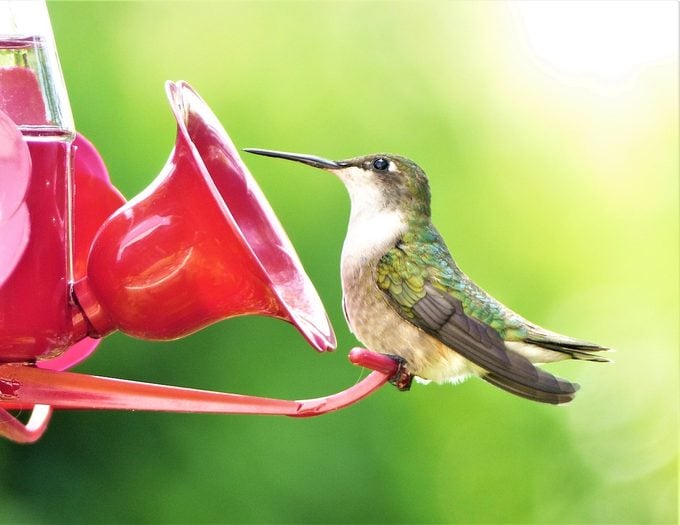
Like the whir of their tiny wings, hummingbirds create quite a buzz among bird-watchers. This time of year, it’s normal to see social media posts announcing a FOY (first of year) hummingbird visit, or to hear neighbors discussing their sightings. The annual arrival of these energetic fliers is truly something to celebrate.
Seeing one of these exuberant and energetic fliers dash through your garden or drink sugar water from your feeder for the 50th time is just as exciting as the first time.
Do hummingbird sightings have special meaning?
When Is the Best Time to Put Out Hummingbird Feeders?
With the arrival of spring comes the return of exciting migrating species, including hummingbirds. As temperatures heat up in most of the country, you should put out hummingbird feeders. These backyard favorites reach the Gulf Coast by late February or March and typically make it northward by mid-to late May. It’s a good idea to have your feeders cleaned, filled and put out a few weeks early, in case they arrive sooner than you think.
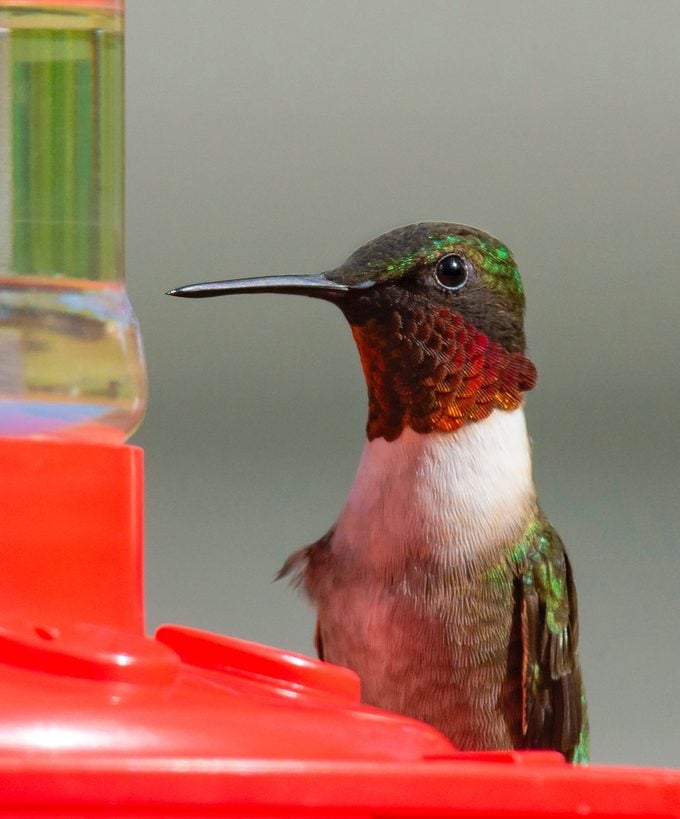
East
From March to May, ruby-throats return to the eastern U.S., busily sipping nectar from flowers and feeders. While ruby-throats are the only hummingbirds regularly spotted in the region, occasional rare visitors might flit through during migration.
“This male ruby-throated hummingbird (above) was the first to arrive this spring, almost two weeks earlier than normal, which thrilled me. He looks so regal in this photo, showing off his magnificent colors as he takes a short break,” says Birds & Blooms reader Mindy Davis.
Southeast
Southeastern regions along the Gulf Coast tend to see a decent number of hummingbirds during winter and the spring migration season. Look for migrating ruby-throats as early as February or March in Florida (some stay year-round). A number of rufous hummingbirds spend winter in Louisiana, Alabama, Mississippi and other states bordering the Gulf of Mexico before heading back west to their breeding grounds.
Southwest
Southwestern states like Arizona, New Mexico and parts of Texas see hummingbirds either sticking around throughout the year or migrating through in March or April on the way to their summer homes. Black-chinned hummingbirds settle into valleys and towns of the west and southwest, while Costa’s hummingbirds nest in desert regions during winter and spring before migrating toward the west coast for the hot summer months.
West and Northwest
Allen’s hummingbirds begin their spring migration early. Moving north in Mexico by December, Allen’s hummers reach coastal California and southern Oregon around January or February. Rufous hummingbirds converge in the Pacific Northwest, flying up the coast in February on their way. Other hummingbirds spotted in the northwest region include Anna’s hummingbirds, which remain year-round, Calliope and black-chinned hummingbirds.
Mountain states tend to see their hummers—including broad-tailed hummingbirds—migrating through during late spring. They typically reach their breeding grounds by mid-May.
North and Midwest
Northern and midwestern states generally only see the ruby-throated hummingbird in their backyards. The iridescent green bird with a crimson gorget is unmistakable. Get your hummingbird mixture ready by late April to early May to catch their attention. By early summer, ruby-throats flutter all around the eastern half of the U.S., busily sipping nectar from flowers and feeders.
Check out hummingbird feeder mistakes you should never make.
First Spring Hummingbird Sightings
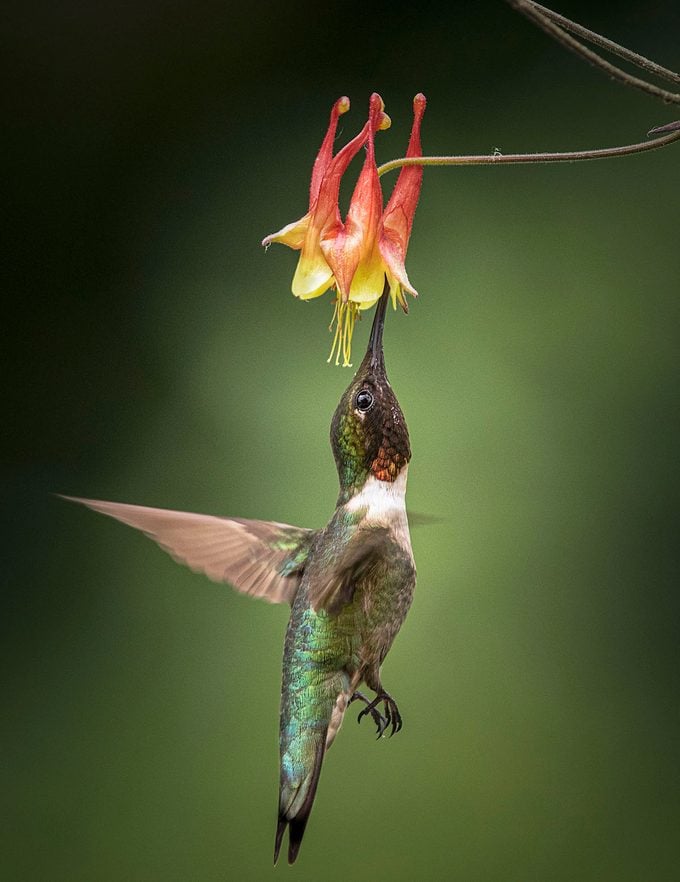
“After what seemed like a very long winter, the first visitor to my backyard finally arrived! A beautiful male ruby-throated hummingbird (above) was enjoying one of the first blooms of columbine in my garden before continuing on his journey. Ruby-throated hummingbirds are the only species that migrate to or through Indiana. I am overjoyed each year when the first male scout appears. After that first sighting, I know more are soon to follow and some will make my backyard their summer home,” says Carol Holliday.
Where do hummingbirds migrate in winter?
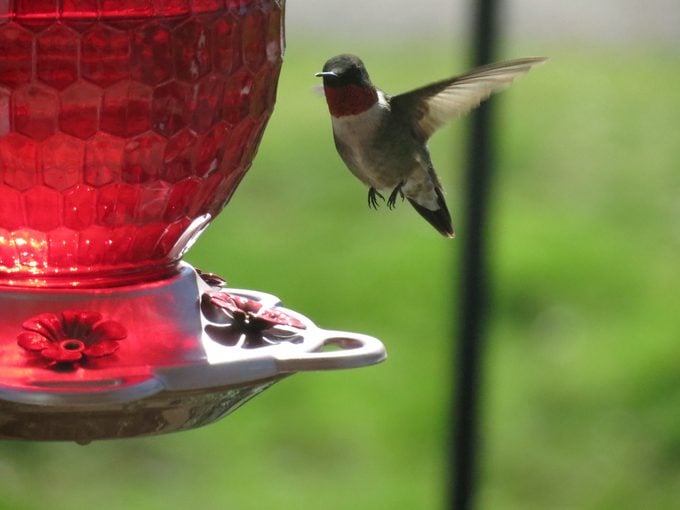
“This was the first ruby-throated hummingbird of the spring. I took this photo (above) in Jackson, Michigan, on April 30,” says Leana Gumbert.
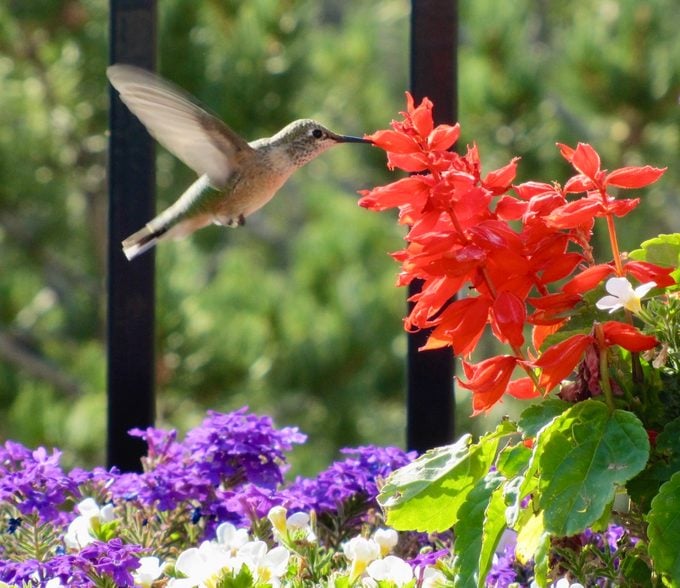
“Each spring, I look forward to the return of the hummingbirds to my home in Buena Vista, Colorado. I make sure that my feeders are full and waiting for my winged friends by April 15. I spend many joyful hours on my deck, both watching and photographing the hummers. This is a female broad-tailed hummingbird (above) sipping nectar from my red salvia,” says Sherry Thomas.
Discover 4 hummingbirds you might see in Colorado.
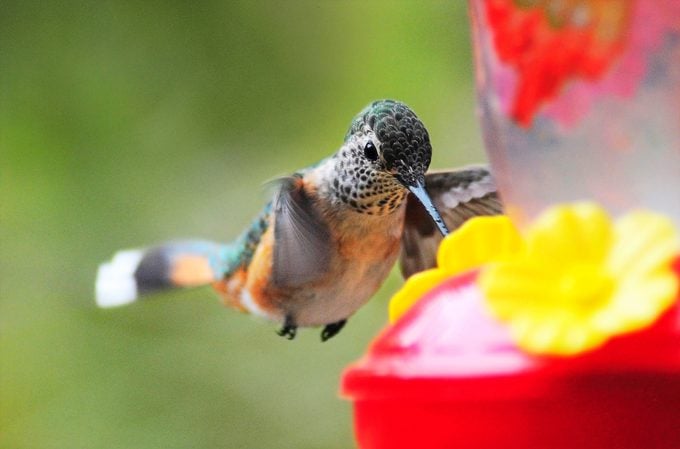
“I always look forward to the first hummingbird of the season—and last year was no exception. We put out our hummingbird feeders during the first weekend in April, which is a little early for us. Lo and behold, this broad-tailed hummingbird (above) showed up early! I was delighted to see the other hummingbirds follow suit just a week later,” says Kristen Clark of Tijeras, New Mexico.
Next, learn more jaw-dropping hummingbird facts.
